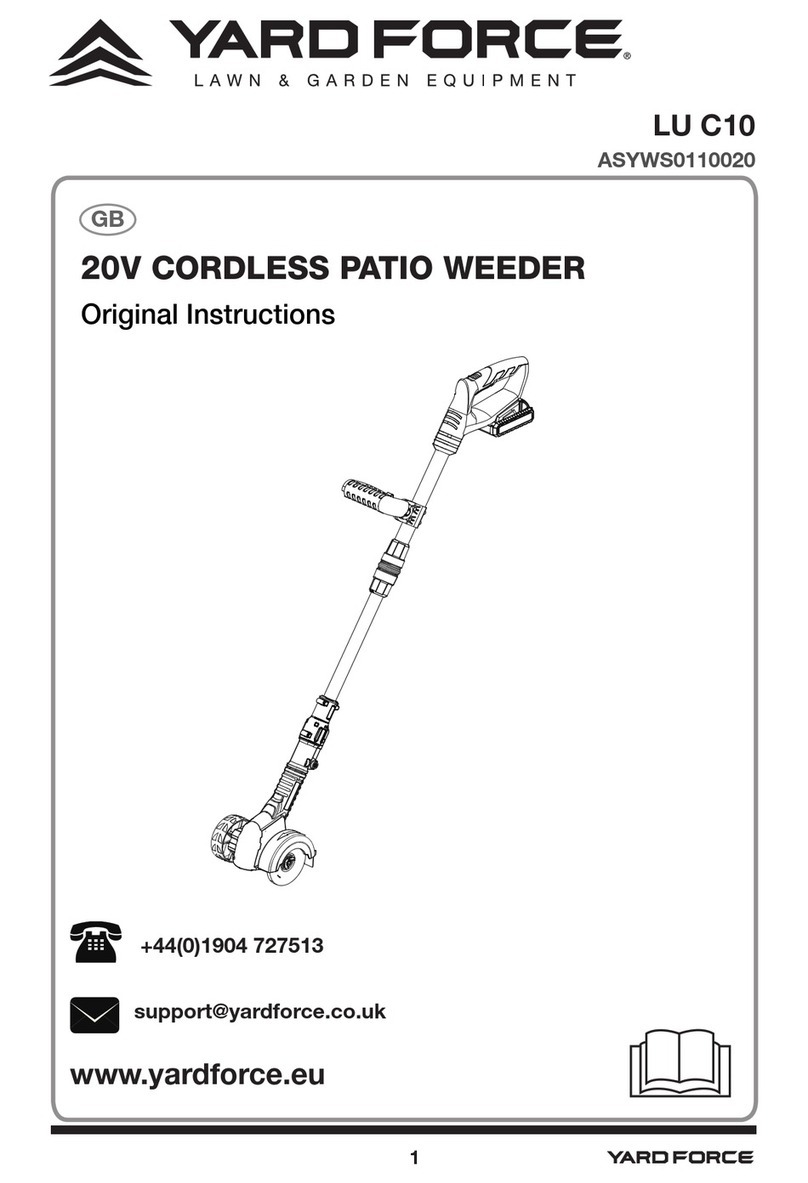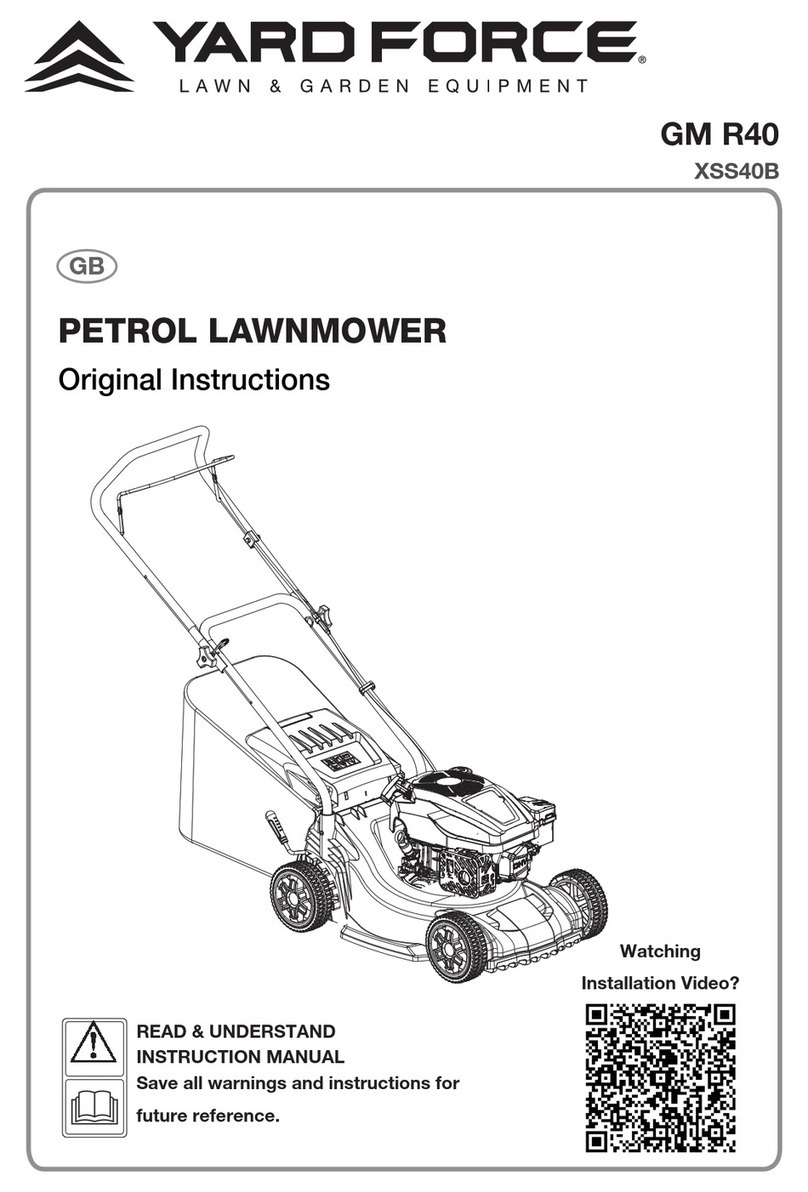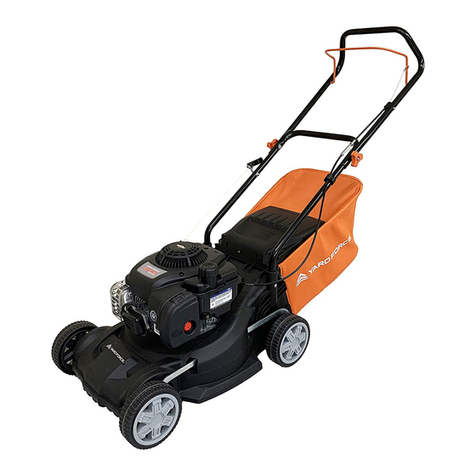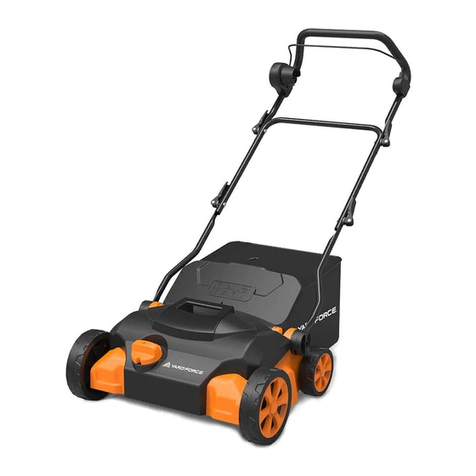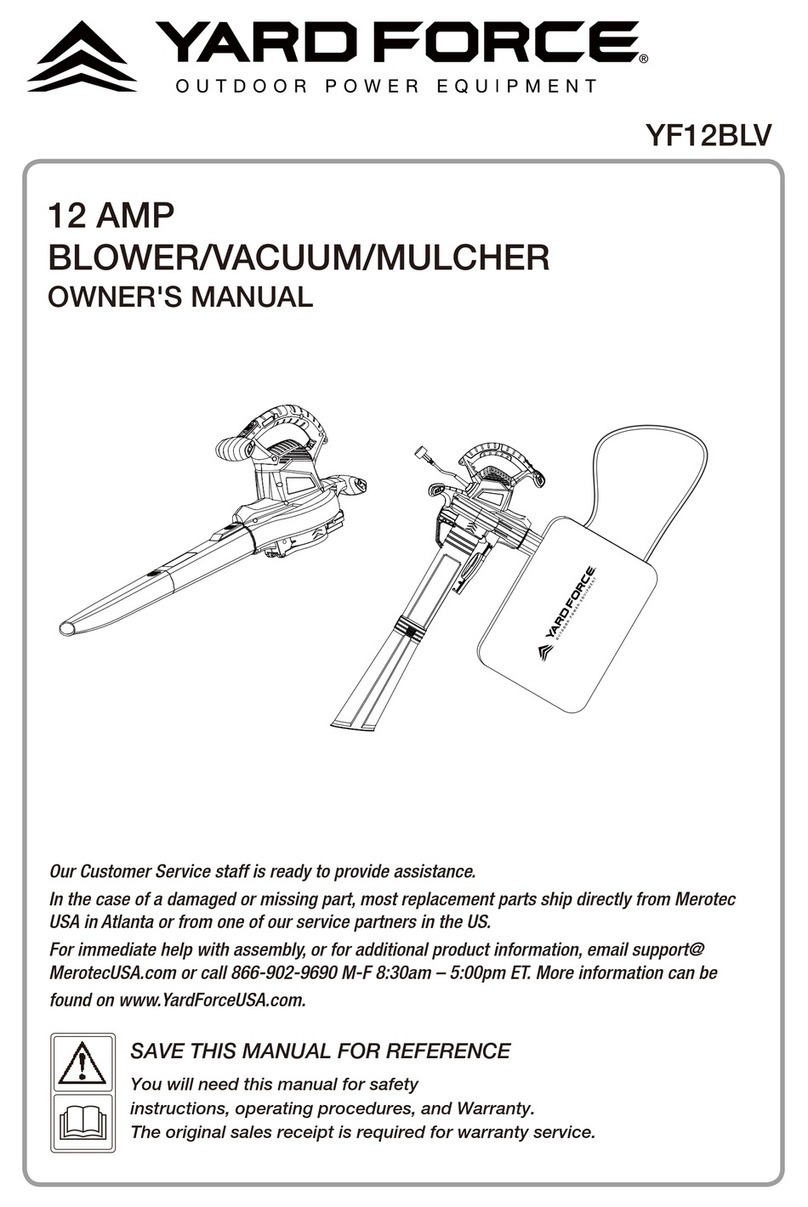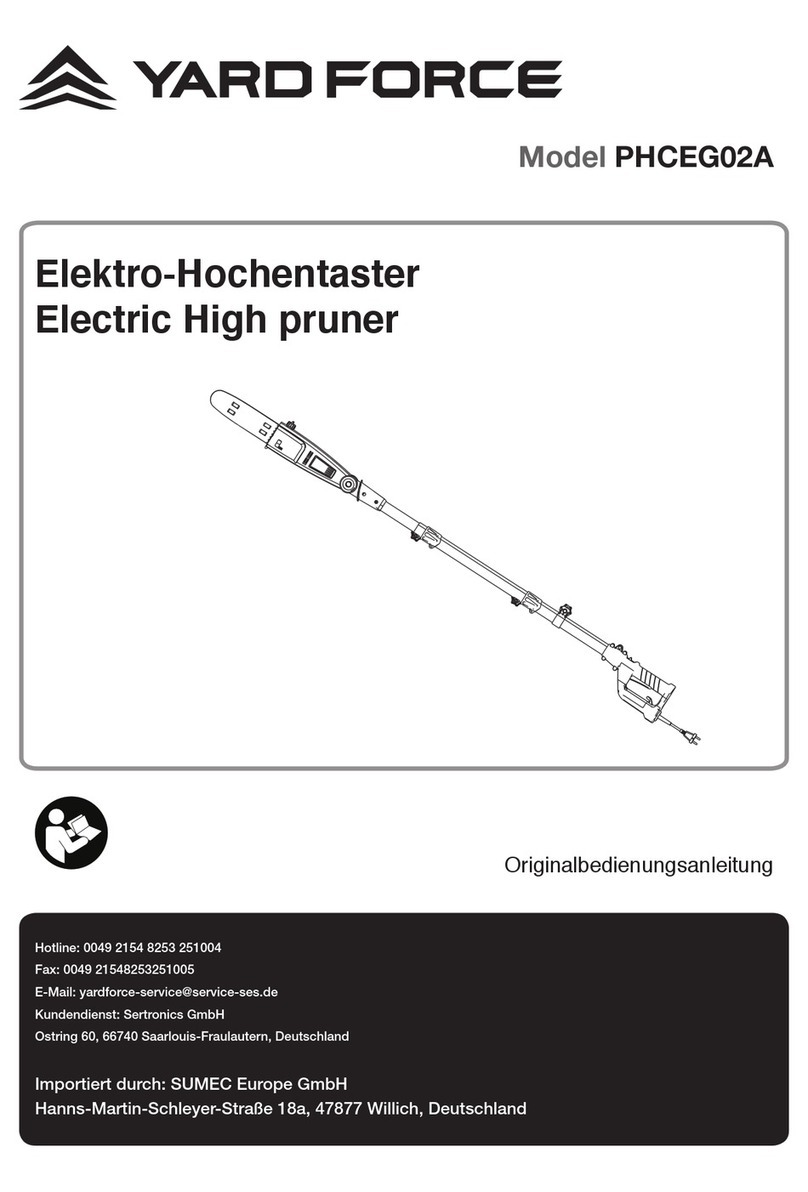
8 9
improperly or at temperatures outside of the specied
range may damage the battery and increase the risk
of re.
9. Do not modify or attempt to repair the appliance
or the battery pack except as indicated in the
instructions for use and care.
Personal safety
WARNING! Do not touch the hot part while operating
and until unit is completely cooled down. Touching
hot surface can cause severe burns, personal injury or
property damage.
1. Stay alert, watch what you are doing and use
common sense when operating the re starter. Do
not use the unit while you are tired or under the
inuence of drugs, alcohol or medication. A moment
of inattention while operating the unit may result in
serious personal injury.
2. Do not force the appliance. It will do the job better
with less likelihood of injury if it is used at the rate for
which it was designed.
3. Use the right appliance. Do not use the appliance for
any job except that for which it is intended.
4. Do not use the appliance if the switch does not turn
it on and off. Any appliance that cannot be controlled
by the switch is dangerous and must be repaired.
5. Disconnect the battery pack from the appliance
before making any adjustments, changing accessories
or storing the appliance. Such preventative safety
GENERAL POWER TOOL SAFETY WARNINGS PRODUCT SAFETY WARNINGS
measures reduce the risk of starting the appliance
accidentally.
6. Store the idle appliance out of the children’s
reach and do not allow persons unfamiliar with
the appliance or these instructions to operate the
appliance. Appliances are dangerous in the hands of
untrained users.
7. Maintain appliance with care. Check for misalignment
or binding of moving parts, breakage of parts and any
other condition that may affect the tool's operation.
If damaged, have the tool repaired before use. Many
accidents are caused by poorly maintained power
tools.
8. Keep the product dry, clean and free from oil and
grease. Always use a clean cloth when cleaning.
Never use brake uids, gasoline, petroleum-based
products, or any strong solvents to clean your
product. Following this rule will reduce the risk of loss
of control and deterioration of the enclosure plastic.
9. Use the appliance and accessories in accordance
with these instructions and in the manner intended
for the particular use of the appliance, taking into
account the working conditions and the work to be
performed. Using the tool for operations different
from those intended could result in a hazardous
situation.
10. Battery tools do not have to be plugged into an
electrical outlet; therefore, they are always in
operating condition. Be aware of possible hazards
